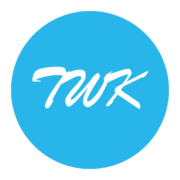The Structure of a Blog Post
Writing a blog post can be very time consuming, especially if you don’t know what you’re doing – should you write a title first or grab the title from your content, how many words should it be, just getting started is bad enough – basically, writing is hard!
Just the thought of writing over 1000 words puts plenty of budding writers off – this is why great writers follow a plan – a writing template.
Following a template gives your blog post a structure, a start, a middle and an end. This is good for you as a writer because you have a recipe to follow and it’s great for the reader as the end result will be something engaging.
Down below is a typical blogging template I follow and one we’ll go through together.
The basic blog Post
This is a basic blog post structure – this template is used for a post length typically around 1200 words – and we would use this basic template when answering a question.
For example: What are the benefits of travelling alone? or How do I plan a luxury trip?
Think about your typical (How, Why, Where, What, Which) – types of questions.
1.This Is Your Title
Typically, your title is a question – we will be using questions we find on Google which our audience are asking.
2.Intro Sentence (25 words)
Write a descriptive sentence to hook in your reader by relating to their problem – “I have been wondering about xyz so thought I would research the answer” or “I was talking to my neighbour who asked xyz and thought it would make a great blog post.” It gives a sense of normality about the question.
3. Provisional Answer (45 words) Bold
We all know how frustrating it is when we read a blog post that doesn’t answer the question until the end of the post or sometimes not at all – give the reader the answer in this paragraph straightaway.
This answer serves two purposes the first is to answer the question of the blog post which gives the reader what they wanted and second is to try and win the google snippet – hence why we bold the text.
*Google has been experimenting with A.I summaries which has seen snippets disappear – but I still write this way in 2025!
4. Bridge Paragraph – Did You Know? (80 words)
Some readers will take their answer and run but others will continue reading – we want to entice the reader to our main blog content by using a Bridge Paragraph.
The best way to do this is to use a Did You Know? question as it will add intrigue and keep eyes on the page.
The bridge paragraph transitions the reader from the Provisional Answer to the main body of the blog – even though the reader has an answer to the question we want to expand on the answer later in the blog.
5. Sub-Heading 1/3 (Main Body Content – 400 words)
Your first sub-heading should be an expansion of the answer paragraph.
This section is about 400 words long (3 paragraphs) it will be the main bulk of the blog post and provide original research featuring bulleted lists, tables, infographics, images, graphs – it will be a mix of written and visuals to provide good tangible data to the reader.
6. Sub-Heading 2/3 (250 words)
This section is where you want to gauge what will the reader ask next?
The sub-heading should be that question – and you should give a 250 word answer.
As you do your research for the answer paragraph & main body content you will start to ask yourself these same questions – if you’re thinking it, chances are someone else is too- Anticipate your readers mind.
7. Sub-Heading 3 (250 words)
This section is a copy of sub-heading two – what is the next question your reader would ask – follow the same principles as section 6.
8. Just For You (75 words x2) – 150 words
This section is split into two parts but are identical sections.
We want to grab two related questions that wouldn’t make it into the blog post but are what your reader will still find interesting.
Link to other blog posts within your blog – if possible.
And there you have it – a comprehensive basic blog structure that you can follow when writing a basic blog post.
In the next lesson you’ll watch me write a blog post where I can show you the research phase as well as a good work flow.
